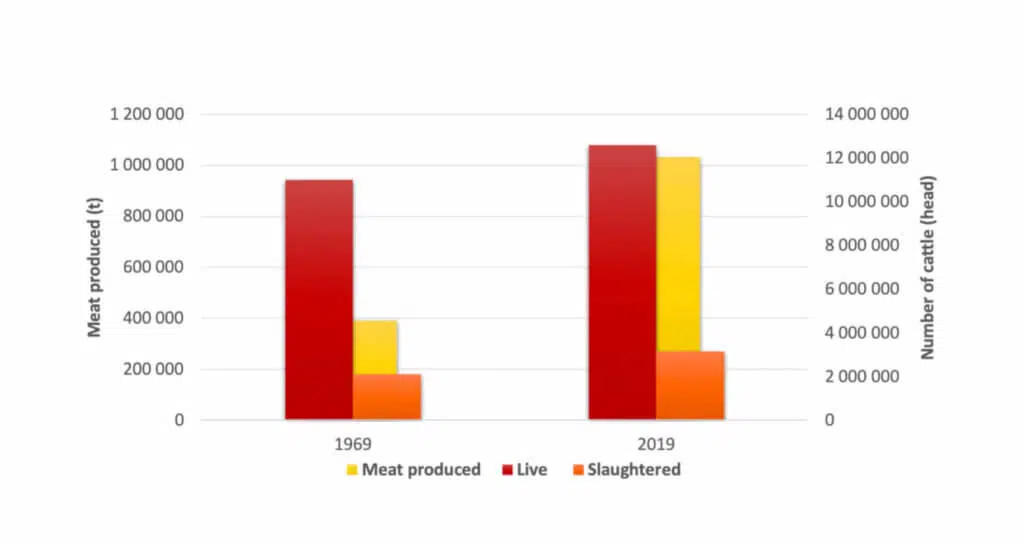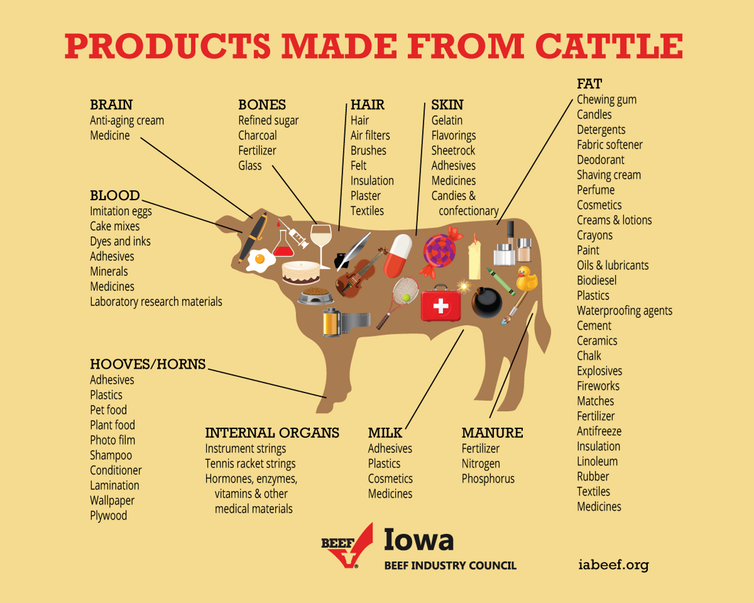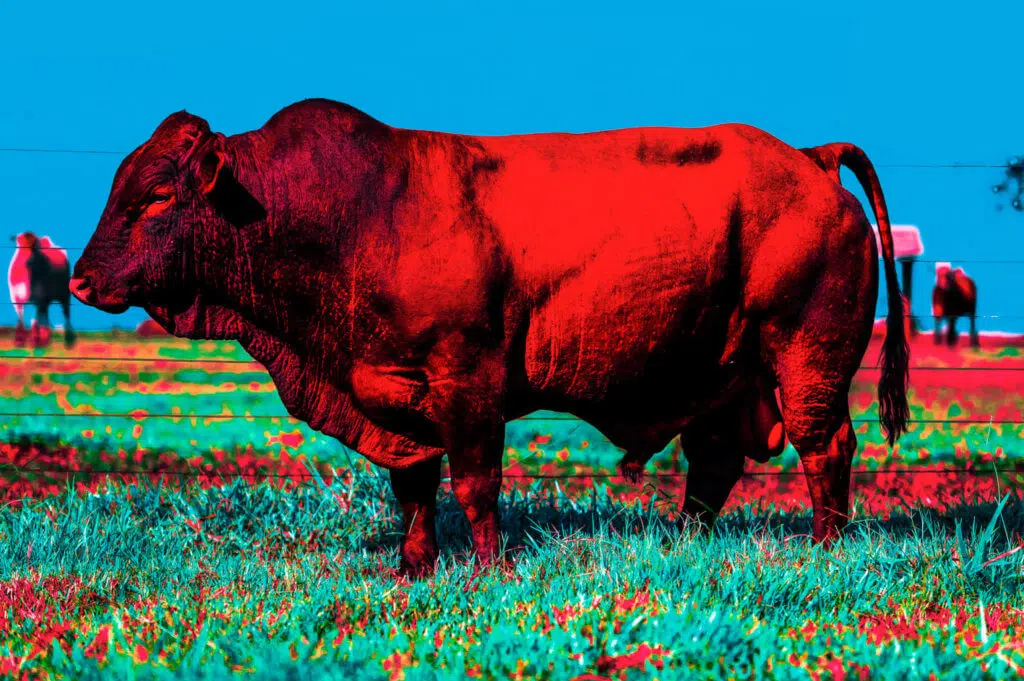At the shortest end of the livestock stick, you will usually find beef cattle. Many are of the opinion that they are highly inefficient livestock due to their extended life cycle, quantity of feed required to produce a kilogram of meat, and the amount of land used by their production system. However, to be fair, if you consider all the impressive facts regarding beef cattle production in South Africa, it quickly becomes clear this might be a misguided view. If the improvements in production and genetics of the last 50 years are anything to go by, the future of beef could be quite astounding.
The recyclers
There is a general perception that beef cattle consume a large proportion of grain, yet research has shown that only 7–13% of the world’s beef production is based on grain feeding. Beef cattle production occurs over a wide range of systems, including grazing systems, mixed systems, and feedlots. Cattle possess the unique ability to consume feeds that would otherwise have gone to waste and, in return, produce high-quality protein loved by many. Natural grazing or crop residues, which are usually unfit for consumption by man or monogastric livestock, form a large part of the
diet consumed by beef herds across the globe.
In addition, by-products (oilseed meals, for example) from industrial processes are frequently incorporated into the diets of ruminants. This recycling ability of ruminants is powered by the unique microbial population that exists within their rumens. Therefore, beef cattle production systems have a net positive contribution to food balances, as less food fit for human consumption is directed toward their production. Superb!
Another benefit of beef production systems is realised in communities or areas where infrastructure and crop production are limited. Cattle have adapted to the harsh environments in which their stockmen have kept them and are, therefore, hardier than poultry and pigs. Without cattle, some of these communities would not have access to nutritious, high-quality protein foodstuffs such as meat and milk.
The record-breakers
As shown in Table 1, the beef cattle present in South Africa are not the same animals we used to keep 50 years ago.
| 1969 | 2019 | Change | Improvement (%) | |
| Total beef cattle population (head) | 11007313 | 12588635 | 1581322 | 14,1 |
| Total beef cattle slaughtered (head) | 2100000 | 3147922 | 1047922 | 49,9 |
| Yield per carcass (kg) | 185,7 | 328,3 | 142,6 | 76,8 |
| Meat production (t) | 390000 | 1033310 | 643310 | 165,0 |
Table 1 How beef production has changed from 1969 to 2019 (source: Food and Agriculture Organization Corporate Statistical Database, 2021).
The efficiency of beef production in South Africa has made some meaningful leaps over the past 50 years. In Figure 1,
the tremendous improvement in our beef production systems is evident. With a mere 14,4% increase in the size of the national herd, the 2019 cattle herd produced 643 310 t more meat than the herd of 1969. It is true that the number of cattle being slaughtered has increased over the past 50 years by 49,9%, but this could not solely be the source of this improvement. The figure also shows that modern beef animals are clearly better at producing meat than their predecessors, with a 76,8% improvement in carcass yield.

We need to recognise that our cattle could not have achieved these improvements on their own. A great round of applause should be given to our farmers and producers for implementing strategies – through breeding, management, and feeding practices – that have helped their animals reach superior production heights, while feeding an evergrowing, hungry world.
Hoof-to-tail incorporators
When you think about the end-products of beef cattle production, your thoughts might just wander off to the ten-day-aged rump lying in the fridge, ready for tonight’s braai. However, the picture is a bit bigger than just dinner. There is a lack of recognition for all goods and services delivered through the beef production chain.
Here is a glimpse of the bigger picture … where nothing goes to waste: At the dining room table, little Susan is busy completing her art homework after a long day of school and extra-mural activities. Being the creative soul she is, Susan is using some crayons and paint to do so. Susan’s mother calls her to pack away her tennis racket and, in the rush, she spills some paint on the floor. Thanks to our beef cattle, Susan has access to resources such as the crayons, paintbrush, paint, tennis racket (useless without strings), and detergent (used to clean the creative spill).

The future of beef
If our beef cattle can do what they do now, it will be mind-blowing to see what they can do in the next 50 years. By no means is beef cattle production perfect and there will always be room for improvement, but what are you waiting for? Go and buy that local beef!
Ruminant researcher











Nice article, Ashley!
Lovely article, Ashley. Beef blood for artificial eggs? That got me. Hope they dont tell the vegans!
Products made from beef-blew me away. Great article Ashley-meat production has really grown in the last 50years. Thank you
Well Ash
Nice reminder of the value knowledge and technology bring to the table to produce the great sources of food we deliver to the consumer, Time for another braai.
A really excellent article Ashley. I will be sharing it with all of my non industry people in an effort to help them understand the reality of their dinner time steak.